The hidden meanings of Destined to be Happy exhibition - The Interview with Irina Korina
10 January 2017 | By
09 January 2017 | By
Inside the Picture: Installation Art in Three Acts - by Jane A. Sharp
19 November 2016 | By
Conversations with Andrei Monastyrski - by Sabine Hänsgen
17 November 2016 | By
Thinking Pictures | Introduction - by Jane A. Sharp
15 November 2016 | By
31 October 2016 | By
Tatlin and his objects - by James McLean
02 August 2016 | By
Housing, interior design and the Soviet woman during the Khrushchev era - by Jemimah Hudson
02 August 2016 | By
Dressing the Soviet Woman Part 3: "Are Russians Women?" Vogue on Soviet Vanity - by Waleria Dorogova
18 May 2016 | By
Dressing the Soviet Woman Part 1 - by Waleria Dorogova
13 May 2016 | By
Eisenstein's Circle: Interview With Artist Alisa Oleva
31 March 2016 | By
Mescherin and his Elektronik Orchestra - by James McLean
13 January 2016 | By
SSEES Centenary Film Festival Opening Night - A review by Georgina Saunders
27 October 2015 | By
Nijinsky's Jeux by Olivia Bašić
28 July 2015 | By
Learning the theremin by Ortino
06 July 2015 | By
Impressions of Post- Soviet Warsaw by Harriet Halsey
05 May 2015 | By
Facing the Monument: Facing the Future
11 March 2015 | By Bazarov
'Bolt' and the problem of Soviet ballet, 1931
16 February 2015 | By Ivan Sollertinsky
Some Thoughts on the Ballets Russes Abroad
16 December 2014 | By Isabel Stockholm
Last Orders for the Grand Duchy
11 December 2014 | By Bazarov
Rozanova and Malevich – Racing Towards Abstraction?
15 October 2014 | By Mollie Arbuthnot
Cold War Curios: Chasing Down Classics of Soviet Design
25 September 2014 | By
Walter Spies, Moscow 1895 – Indonesia 1942
13 August 2014 | By Bazarov
'Lenin is a Mushroom' and Other Spoofs from the Late Soviet Era
07 August 2014 | By Eugenia Ellanskaya
From Canvas to Fabric: Liubov Popova and Sonia Delaunay
29 July 2014 | By Alex Chiriac
My Communist Childhood: Growing up in Soviet Romania
21 July 2014 | By Alex Chiriac
Monumental Misconceptions: The Artist as Liberator of Forgotten Art
12 May 2014 | By Rachel Hajek
28 April 2014 | By Rachel Hajek
An Orgy Becomes a Brawl: Chagall's Illustrations for Gogol's Dead Souls
14 April 2014 | By Josephine Roulet
KINO/FILM | Stone Lithography Demonstration at the London Print Studio
08 April 2014 | By Alex Chiriac
24 March 2014 | By Renée-Claude Landry
Book review | A Mysterious Accord: 65 Maximiliana, or the Illegal Practice of Astronomy
19 March 2014 | By Rosie Rockel
Leading Ladies: Laura Knight and the Ballets Russes
10 March 2014 | By Bazarov
Exhibition Review | Cash flow: The Russian Pavilion at the 2013 Venice Biennale
03 March 2014 | By Rosie Rockel
24 February 2014 | By Ellie Pavey
Guest Blog | Pulsating Crystals
17 February 2014 | By Robert Chandler Chandler
Theatre Review | Portrait as Presence in Fortune’s Fool (1848) by Ivan Turgenev
10 February 2014 | By Bazarov
03 February 2014 | By Paul Rennie
Amazons in Australia – Unravelling Space and Place Down-Under
27 January 2014 | By Bazarov
Exhibition Review | Siberia and the East, fire and ice. A synthesis of the indigenous and the exotic
11 December 2013 | By Nina Lobanov-Rostovsky
Shostakovich: A Russian Composer?
05 December 2013 | By Bazarov
Marianne von Werefkin: Western Art – Russian Soul
05 November 2013 | By Bazarov
Chagall Self-portraits at the Musée Chagall, Nice/St Paul-de-Vence
28 September 2013 | By Bazarov
31 July 2013 | By Richard Barling
Exhibition review | Lissitsky — Kabakov: Utopia and Reality
25 April 2013 | By Richard Barling
Exhibition review | Ilya and Emilia Kabakov: The Happiest Man
18 April 2013 | By Richard Barling
31 March 2016 | By
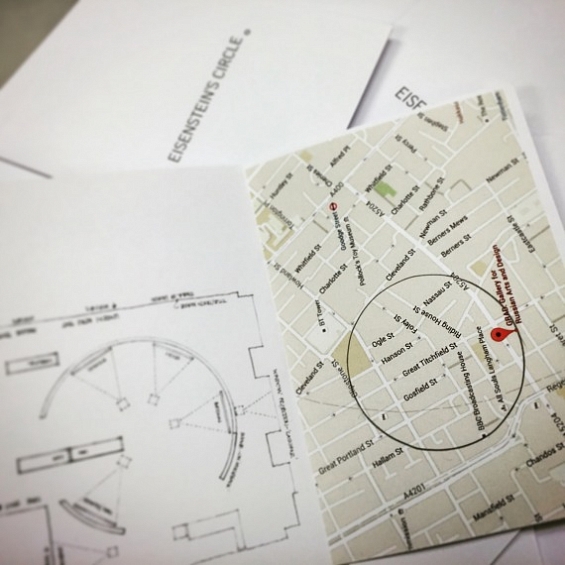
Debbie: How did you come up with the idea for Eisenstein's Circle?
Alisa: I started with the idea of an audio guide to the exhibition that would leak into the street. But it's not a straightforward audio guide: the exhibition is made by Ian Christie, who's such a renowned authority on Eisenstein, and I didn't want to compete with that degree of knowledge – I wanted to play with what Eisenstein has to offer and use it in my own way. I also wanted to make something that people could engage with whether or not they know much about the films, and which would maybe make them find something fresh in the films, and in the city around them.
I usually work outside, in the city, so it was challenging to be faced with an exhibition space. Before I started, I was given the plans for the exhibition and they had a really distinctive feature, the ring of screens, which triggered the idea of using a circle as the basis and that encouraged a certain pathway.
When I started looking through Eisenstein's writings, I came across a part where he talks about circles and other shapes, and I realised that we were both interested in circles, in different ways.
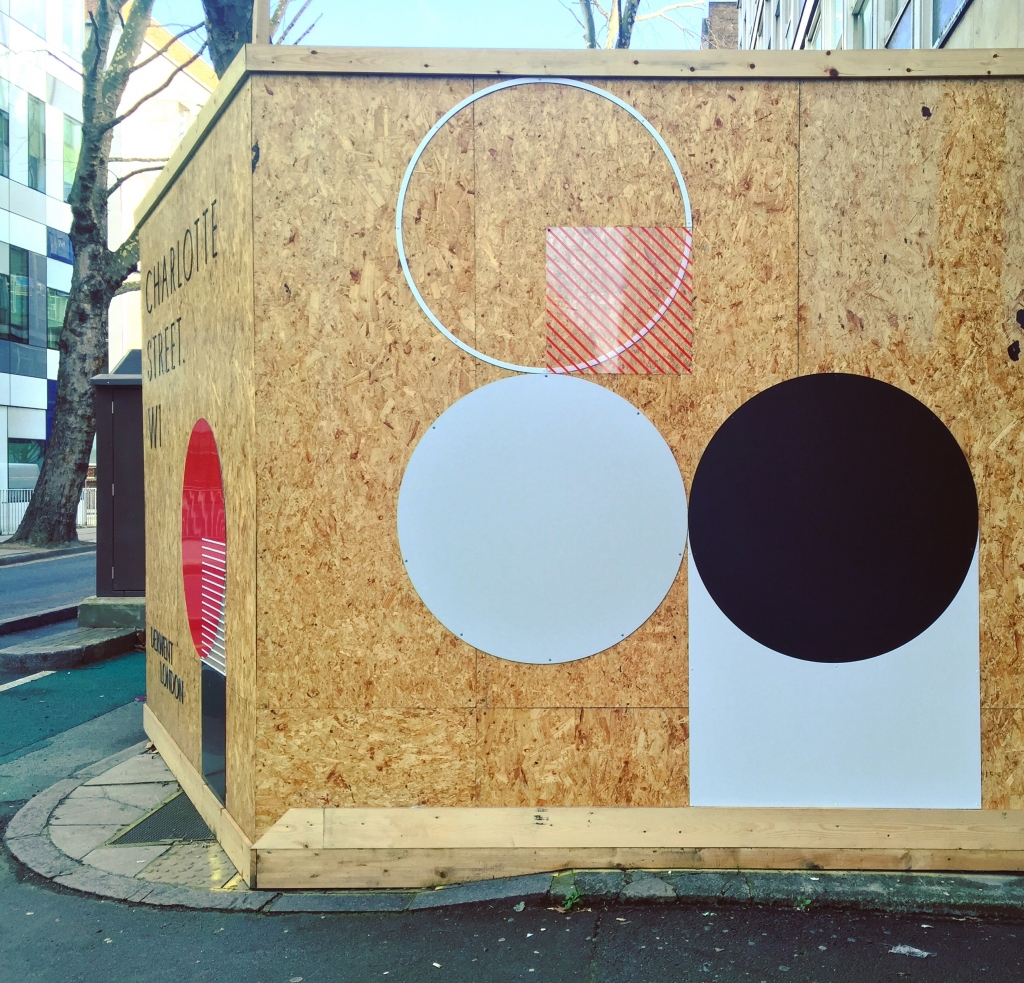
It made me think of the Situationist game, where they put a glass on a map and draw round it, then have to try to walk that circle.
There is another way to go – to walk round the places Eisenstein went to in London – but they were quite scattered and hard to reach in a walk. But Eisenstein did enjoy exploring the city as an ordinary person – he went to pubs, he took tram rides, he liked experiencing London at street level and observing everyday life. So it began to seem that the audio walk could also put the listener into that role, of looking closely at the streets.
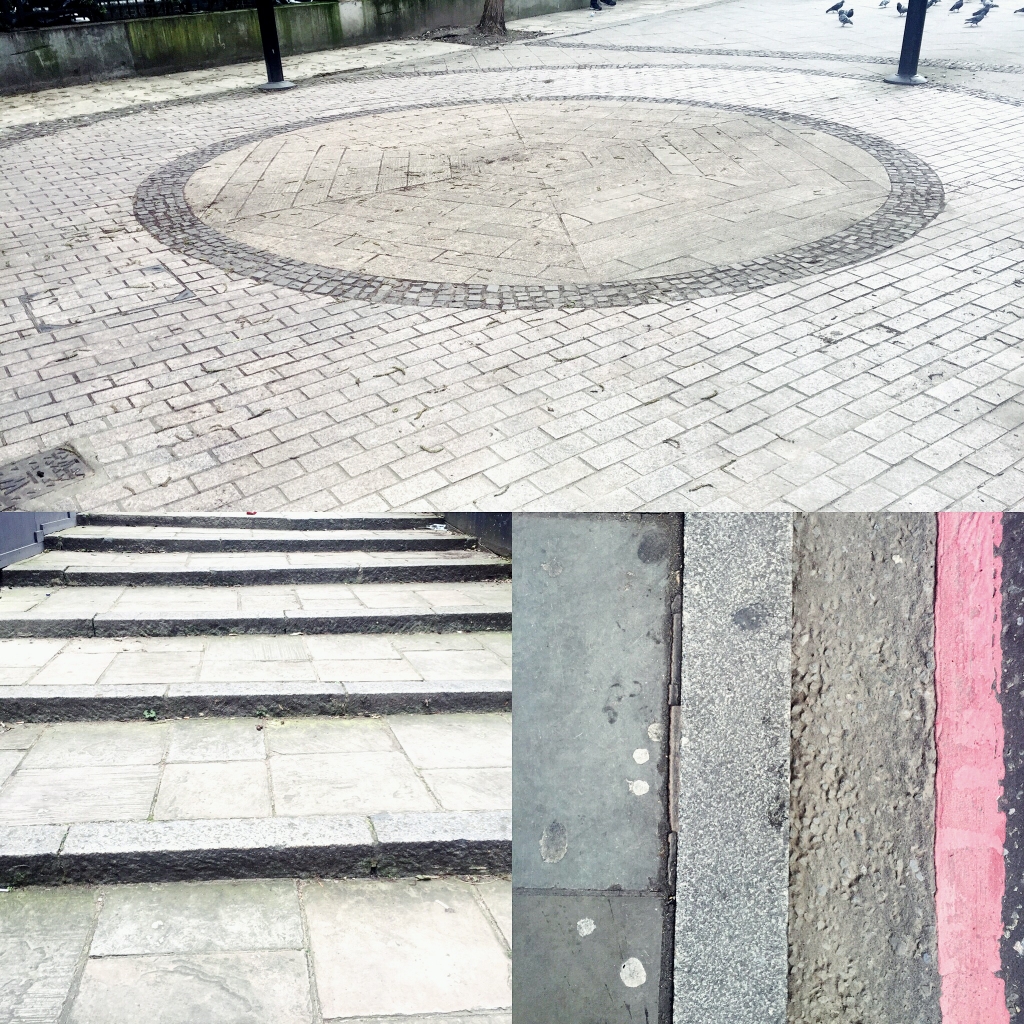
D: Where did the material come from?
A: I was in Moscow over Christmas and went to a bookshop called Falanster, which has the best books on art and politics, and found Eisenstein's books in Russian – then when I was back in London the British Library had a lot of the material in translation. I started by looking at Eisenstein's own writing, but I wanted to add in other people's analysis, which led to making two different layers where other people talk about Eisenstein's geometry.
I walked a lot in the streets around GRAD and I was looking for places to take the listener, but then I thought it would be better if they made their own discoveries. Once you start noticing circles, you see them everywhere – the buildings of Broadcasting House, for example, and All Souls church, but there are many others.
So the material is really all there in the city: the circles and the other shapes that interest Eisenstein, and then the flow of people, and that led to the idea of floating yourself into the flow of the city.
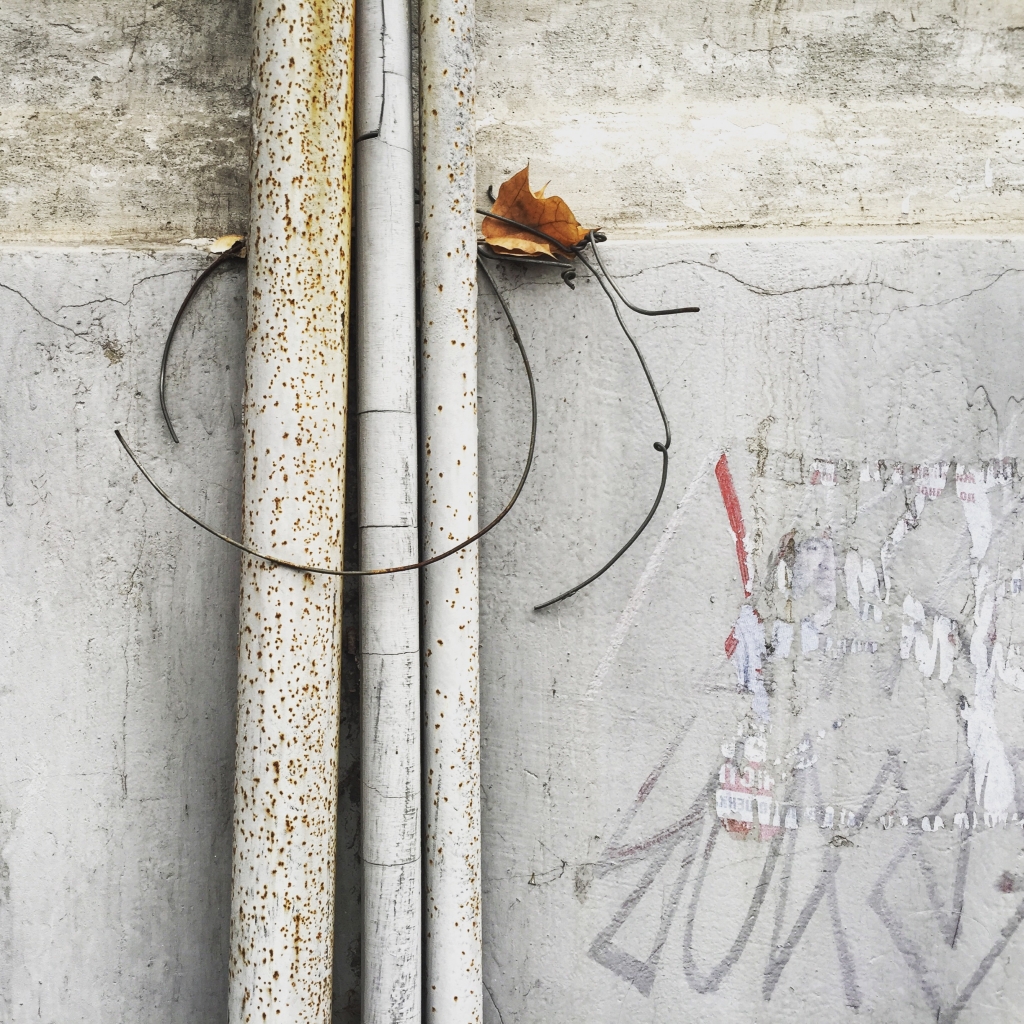
D: And that leads to the mirror at the end?
A: I wanted to bring it back at the end to yourself – you're doing all the looking and at the end you are looking at yourself. Then you can go back into the gallery and see if it has changed the way you look at the material in there.
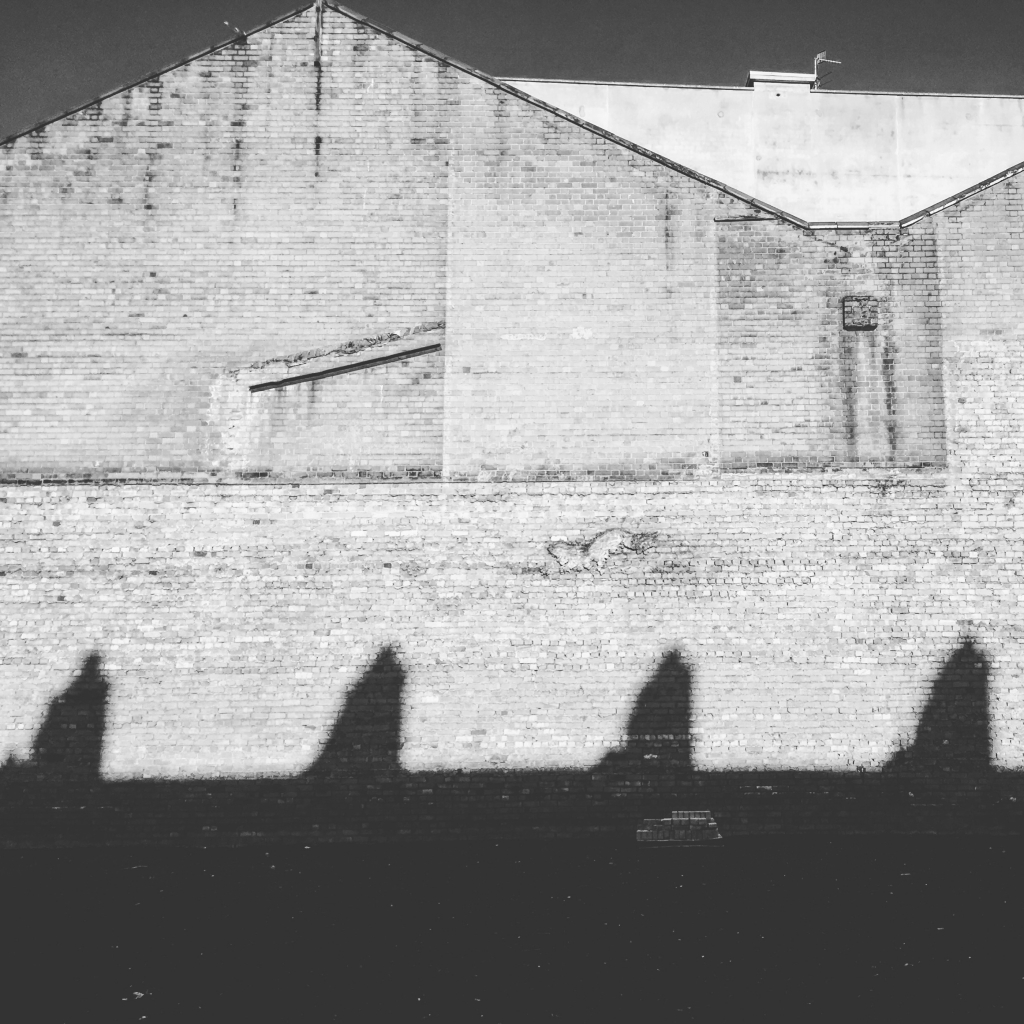
D: Finally, can you talk about the workshop we are running in April?
A: It's a walkshop – a walking workshop, which will take participants out walking around the streets around GRAD, looking and seeing, and observing and recording. It's for anyone who wants to see the city in a different way.
D: Should we say any more about it?
A: Come along and find out!


